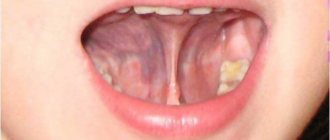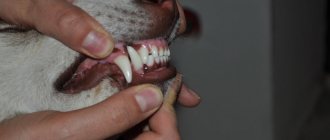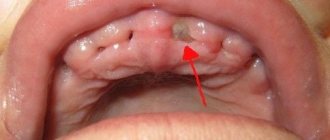Andrey Ushakov
Director of the Marketing Management Department of the L-Wine wine project.
Wine is like art. There is a lot of subjective stuff in it, and the last argument for or against will always be “like/dislike.” But there are also objective parameters for assessing the quality of a noble drink. If you are confused by the smell of wine or an unusual taste, then it is quite possible that you have come across a defective sample. There are several life hacks that can help you recognize flaws in wine from the first sip. We tell you how to diagnose a bottle and insure yourself against purchasing a spoiled drink in the future, even if you are new to the wine world.
"Cork disease"
Symptoms: The wine has an unpleasant, pungent odor, reminiscent of wet cardboard or dog hair. If you smell “dog” or “damp cellar”, these are not the rich nuances of the original complex wine. Don't you think the wine is sick?
What to do
Pour the wine down the sink - alas, it cannot be saved. Between 1% and 7% of all cork-corked wine in the world is contaminated with “Cork taint” responsible compounds. Determination of haloanisoles and halophenols in cork matrix: A review of specific “cork” bacteria. If you don’t want to participate in the lottery, buy wine with a screw cap, there is simply nowhere for such bacteria to come from.
Reduction, or “hydrogen sulfide bouquet”
Symptoms: The wine smells like boiled cabbage, garlic or a rotten egg.
What to do
This case is not at all hopeless. This smell appears if the wine lacks oxygen and the yeast begins to release thiols - organic sulfur compounds. You can improve the smell with the help of aeration - saturating the wine with oxygen.
Pour the wine into a decanter (a process called decanting) and let the drink “breathe” until the smell dissipates. Not ready to wait a few hours? Stir the wine with a silver spoon or drop a clean copper coin into the decanter to precipitate the sulfur compounds.
Eight basic wine defects, and how to determine them by smell
We consume a lot of poor quality wine, sometimes without realizing it. There is nothing to be ashamed of this, since many of us simply do not know what the signs of these deficiencies are. We'll look at the eight main wine defects and how to identify them by smell. The good news is that most of these defects are harmless to consumers. But this makes the wine tasteless.
Wine oxidation
What's the point? When you leave apple slices on the table, it turns brown when cut from excess oxygen. The same thing happens with your wine. Oxidation is the most common fault with older wines, but it can be quickly reproduced at home with any bottle of wine.
How to find out? Oxidized wines lose their richness both in color and taste. The deep reds take on an orangey-brownish hue and reveal strange flavor tones of vinegar and caramelized apple.
It should be noted that white varieties are more prone to oxidation than red ones, since the increased tannin level becomes a buffer for this process.
Is it possible to change the situation? No, but you can increase the shelf life of an open bottle by using special tools. If the bottle oxidizes immediately after opening it, it means that it had a faulty cap, or it was handled carelessly during transportation.
"Cork Taste"
What's the point? The chemical contaminant 2,4,6-Trichloroanisole (TCA) was introduced into your wine during production. It is found in oak barrels or in wine cellar production lines.
How to find out? Such drinks have a stale bouquet that resembles the smell of wet newspaper, moldy cardboard or wet dog hair, and the fruit taste is minimal. Some experts estimate that TCA-contaminated drinks reach up to 2% of all wines bottled under actual cork, making "cork taste" the second most common wine defect.
Sulfur compounds
What's the point? Sulfur is a rather difficult problem in winemaking. It is added in small proportions to almost all wine to stabilize it. Another sulfur compound found in wine, called dihydrogen sulfide (H2S), is a natural byproduct of fermentation failure.
How to find out? Sulfur compounds have the smell of smoke (like a lit match) or boiled cabbage. As a rule, such unpleasant odors dissipate within 15-20 minutes after uncorking the wine. This is why it is recommended to decant it.
The most common manifestation of a sulfur-related defect is called mercaptan. If you notice a rotten egg, burnt rubber, baked garlic smell in your wine after decanting it for some time, then you probably do have a mercaptan problem.
Is it possible to change the situation? Decanting helps reduce unpleasant odors. Additionally, stirring wine with silver (such as a silver spoon) is known to reduce the volume of sulfur compounds (making them less noticeable). However, if the wine is very aggressive, then nothing can be done.
BRETT: "farm-like" scents
What's the point? BRETT, or Brett, is an abbreviation for Brettanomyces. This is the name given to a very unpleasant looking wild yeast. Brettanomycetes smell like farmsteads, hay bales, sweaty saddles, stables, or “horses.” Even in very small quantities, BRETT usually imparts a metallic aftertaste to the drink.
This wine defect was first discovered by the British in beer and has been talked about since 2006. Its presence is associated with the hygiene of the cellar and poorly washed barrels. Brettanomyces is naturally present in grapes, but in general, native yeasts tend to take over during fermentation.
Secondary fermentation process
What's the point? It is possible to see small bubbles where there shouldn't be any, especially in a bottle of young red wine. They are usually produced accidentally when residual sugar is bottled with the drink, causing re-fermentation. This happens more often with vinification with the least intervention, when sulfites are not added to the raw materials.
How to find out? Look for bubbles in the bottle or listen to psssst as you uncork it. Wines typically have a yeasty aroma. Their taste is sharp.
But sometimes secondary fermentation is not accidental. Some winemakers consciously use it to give their products a little sprightliness, and some classic wine styles (say, Vinho Verde, red Bonarda and some Grüner Veltliner) are naturally bubbly.
Is it possible to change the situation? No, but study the wine style to make sure there really shouldn't be any bubbles. Or pour the wine into a decanter and shake to remove any bubbles. Maybe it will work out.
Defects due to heat
What's the point? The wine is spoiled due to excessively high temperature. Yes, this happens more often than you think!
How to find out? The wine sometimes smells like ham. And sometimes the aroma is a little like wine sauce mixed with the aroma of nuts, brown and burnt sugar. Thermal damage often breaks the seal of the bottle (the expansion of heated air pushes out the cap), which also leads to oxidation of the wine.
Is it possible to change the situation? No, but you can try to store your wine at the right temperature and make sure everything is fine. Most people accept 13 degrees as the optimal temperature for a wine cellar. Don't leave wine in the attic!
Damage caused by ultraviolet rays
What's the point? It is a consequence of excessive radiation, usually in the UV spectrum. This usually involves ill-considered placing the wine in the sun or near windows.
How to find out? Delicate white wines (for example, champagne, Pinot Gris and Sauvignon Blanc) are more susceptible to this defect. The wines smell like a wet woolen sweater!
Is it possible to change the situation? No, but you can be smart about storing wine bottles out of direct sunlight. Colored glass in wine bottles is believed to reduce UV exposure. If this is not the case, place the white wine in the darkest corner of the cellar.
Microbial and bacterial footprint
What's the point? In addition to yeast, there are also many microbes that live in wine during fermentation. If any of their colonies become overly aggressive, you may start to get a variety of unexpected aromas.
In small quantities they add an interesting complexity to the wine, but if the colony becomes too vigorous, these odors are considered defects, such as too much salt in a dish.
How to find out? There are many bacteria involved in wine making. They impart certain additional aromas, but also cause characteristic defects in the wine.
Say, if your wine smells like gerbil mink, sommeliers will define it as a “mouse taste,” which is often found in simple wines. When you taste wine, exhale and smell hay, this is called the hay/dry grass effect and indicates another super-productive wild microbe.
Is it possible to change the situation? Unfortunately no. Once the microbe gets into the bottle, you have to live with it. Think of microbes as spices. In small quantities they add attractive complexity, but too many spices intrude on the flavor of the wine.
Wine made from unripe grapes
Symptoms: The wine smells of cat urine, grass and green capsicum.
What to do
The patient is more dead than alive. Unfortunately, if the wine is made from low-quality raw materials, “medicine” is powerless. This usually happens if, for example, weather conditions did not allow the grapes to ripen and gain all the necessary qualities, but the winemaker still decided to put them into production.
Well-known manufacturers who value their name do not allow themselves to do this. So choose wines from trusted brands to avoid this defect.
Wine turns to vinegar
Symptoms: The wine smells like vinegar or acetone or nail polish remover.
What to do
Only Jesus could turn water into wine, but no one could turn vinegar into wine. The maximum you can hope for with such a bottle is to use the wine for culinary purposes.
We are used to hearing that wine only gets better with age, but this is only true for noble, complex wines with great storage potential. Simple, inexpensive wines “for every day” should be drunk, as they say, here and now: white wines are best consumed in the first two years, red wines should not be stored for longer than 3–5 years. So, if you see a 2011 Sauvignon Blanc in a regular chain store for 800 rubles, then leave it on the shelf.
Souring
The most common problem is that when air enters the mash, acetic and lactic acid bacteria convert some of the alcohol into vinegar and water, releasing other substances. As a result, the mash gives off acetone, and after distillation the moonshine turns out sour.
Solution: you can try to quench the acid with soda and distill the distillate again, selecting the “heads” and “tails” (more details in the link above). The effectiveness of fixing moonshine depends on the degree of souring of the mash.
Prevention: be sure to install a water seal on the fermentation tank and check its tightness in order to protect the mash from oxygen.
Pure acetone is transparent, just like alcohol.
"Sunstroke"
Symptoms: The wine smells like dust and cardboard.
What to do
A slight but noticeable smell of dust, which clogs the natural aromas of wine, appears if it has been stored for a long time in bright light or even in the sun. It's up to you to decide whether to drink this wine or not (we wouldn't).
When choosing wine in a regular store, always pay attention to storage conditions. If the bottles are directly under the lamps or the room is too hot, then it is better to look for another place for wine shopping.
Non-standard nose
In addition to bright fruity aromas, in the bouquet of wine you can find extraordinary aromas , which sometimes sound like real flaws. But it is the “non-berry” aromas that become the highlight of truly good wines.
“A common myth about the problems of wine is ignorance of the evolution of a specific appellation or a specific product, a specific year,” says Anatoly Korneev. “They are bringing back the great Burgundy, which has the scent of sage infusion, because people think that as a wine ages, it should retain its fruity aroma.”
The smell of cat urine , a slight hint of what the French playfully dubbed pipi de chat, characterizes the first nose of Sauvignon Blanc wines. The smell of leather saddle is inherent in many red Languedoc wines, Syrah, growing in warm climates, ripe Carignan and slightly unripe Mourvèdre.
The gasoline aroma is characteristic of old, high-quality German Rieslings, and the smell of freshly killed rabbit, blood , and fresh meat is characteristic of many bright Italian varieties (Sangiovese, Piedirosso). The aroma of fresh banana , which otherwise signals increased levels of essential compounds, is a distinctive feature of South African Pinotages.
But wines can actually become sick, and most often the cause of these diseases are microbes.
Wild yeast creeps into the vat - it makes the wine smell like a banana
Oxidase cass, or browning of wine
Symptoms: the wine takes on a brownish tint and a faint smell of Madeira, hazelnuts and rotten apples. Red wine takes on a dry, bitter taste, while white wine vaguely resembles apple cider.
What to do
This defect occurs at the production stage and, unfortunately, is not corrected in any way. In the skin of rotten or moldy grapes, oxidative enzymes - oxidases - are actively produced. If a large amount of rotten grapes gets into production, then when the finished wine comes into contact with oxygen, an oxidation process occurs and the drink changes its properties.
Talking appearance
You can sometimes determine that wine is spoiled by the appearance of the bottle:
- wine stains on the capsule indicate that the cork is leaking, which means that the wine has already had prolonged contact with oxygen;
- the cork does not sit straight in the neck, but sticks out of it or scrolls freely. This means that the wine was stored incorrectly and the cork had time to dry out;
- The bottle label is crumbling around the edges, slightly peeling off, or stuck on with wrinkles. This means that the bottle of wine has been exposed to extreme temperature changes at least once.
“One day, boxes with some imported wine appeared in the supermarket... and a sign that said: “The aroma contains geranium flowers.” The store itself understood that the batch was spoiled, and thus protected itself from claims.”











